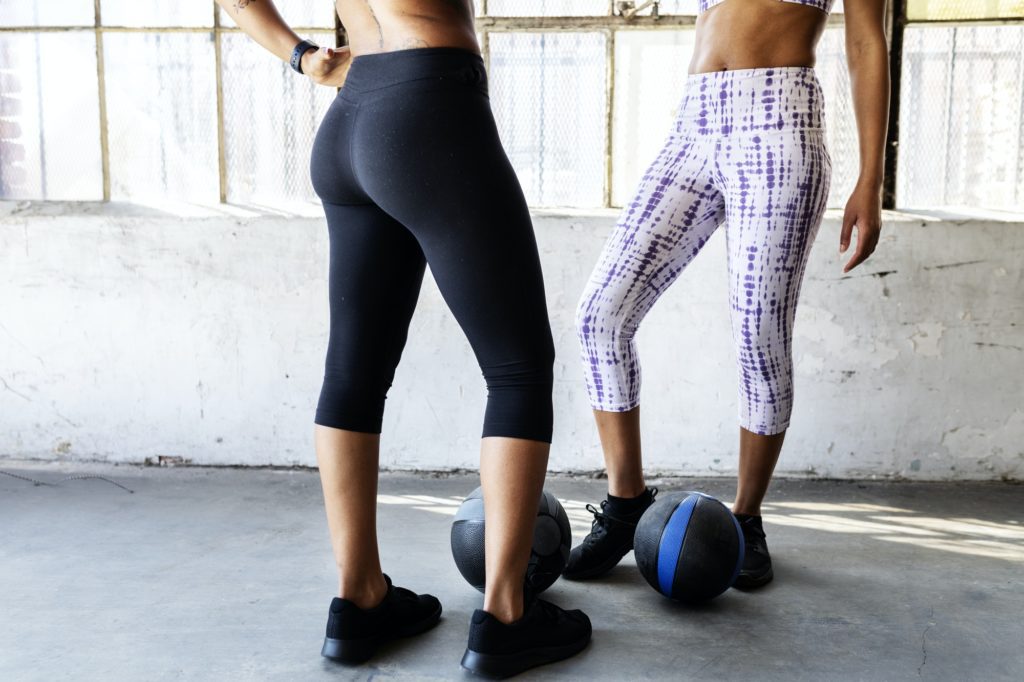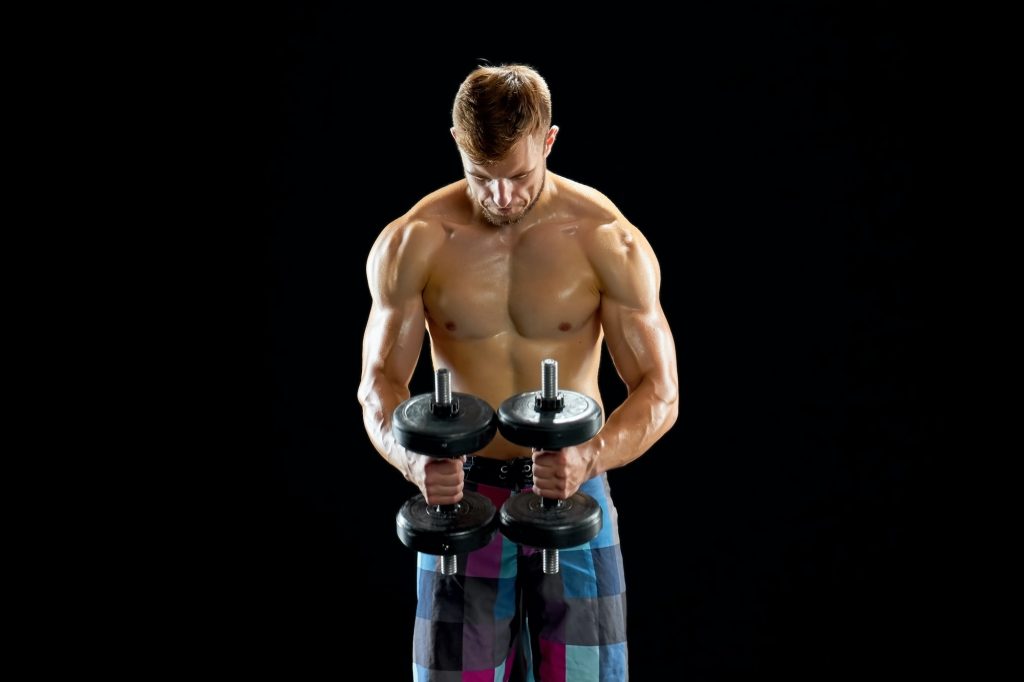The shoulder joint is the most flexible joint in the human body, which makes it very susceptible to injury and pain. Yet, shoulder workouts can improve your posture and increase the strength of the muscles around your shoulder joint. In turn, this can reduce your risk of injury and ensure you don’t miss any upcoming gym session.
In particular, CrossFit shoulder workouts offer a great way to increase your upper body strength, improve shoulder mobility, and increase shoulder stability. So, what kind of exercises should you perform?
What Are CrossFit Shoulder Workouts?
CrossFit is a high intensity interval training program involving functional movements to improve strength and overall fitness. With the use of bars, dumbbells, the bench, and more, a CrossFit workout routine is guaranteed to get you into tip-top shape in no time.
A CrossFit shoulder workout involves an interval exercise program that primarily targets the shoulder muscles and shoulder mobility. It involves strengthening the deltoids, trapezius, levator scapulae, rhomboids, rotator cuff muscles, and more, as well as improving the flexibility of these muscles.

Why Should You Perform CrossFit Shoulder Workouts?
CrossFit shoulder workouts help to gain strength and muscle mass, contributing to greater upper body strength. This ensures you don’t just target the major muscle groups of the lower body, such as the glutes, but also strengthen and improve the fitness of your entire body.
The average CrossFit workout consists of a warm-up, strength, work of the day, and cool down. Usually lasting just one hour, these workouts are quick and efficient.
However, with CrossFit, you want to be careful and ensure you are performing each move correctly. Since many of these exercises are performed quickly, it’s easy to hurt yourself, especially with overhead movements.
If at any point you notice pain, it’s important to stop the exercise. Try correcting your form. If the pain continues, it’s best to forego shoulder exercises until the pain has disappeared. This further means that individuals with recurring shoulder pain may want to steer clear of CrossFit shoulder workouts, since it’s very easy to re-injure a previously injured shoulder by doing so. Instead, it might be best to stick to simple shoulder strengthening exercises in the gym.
What is Needed For It?

For your CrossFit shoulder workout, you will need a pair of dumbbells, a medicine ball, and a barbell and plates. It’s also a good idea to perform your workout with a ton of space, such as outside, so that you don’t cause damage to your floors or ceiling. Alternatively, if you don’t have dumbbells, you can also use a resistance band for these same movements.
Wearing weight lifting shoes also helps you avoid injury and provides more stability as you perform each movement. They have a raised heel, allowing for deeper positions, such as getting low during a squat (Yet, for shoulder workouts, you don’t need to specifically worry about this).
How to Do It Properly, Technique, and Common Mistakes
With the following exercises, you can mix and match. However, for all of them, ensure you perform a proper warm-up and cooldown to prevent injury or pain. So, let’s dive in. What are the best shoulder exercises for your next CrossFit workout?
The Medicine Ball Clean
This exercise targets your shoulders and upper traps, as well as your hamstrings, glutes, and core. To perform it:
- Stand tall with a medicine ball right in front of you and your feet about shoulder-width apart.
- Place your palms on either side of the ball in a deadlift position with your back straight.
- Keeping your gaze neutral, deadlift the ball up by standing up straight, squeezing your glutes, and extending the hips.
- Shrug your shoulder upwards and bend your elbows, keeping the ball close to your body.
- Then, squat down by bending your knees, and set the ball back down.
- Begin in the starting position once again, and repeat.
This video offers a great demonstration of this particular exercise:
Make sure you brace your core through the entire movement to protect your low back. This can be done by tightening through the front of the abdominals and maintaining a neutral spine.
The Push Press
The push press targets the shoulders, triceps, and upper back. You’ll need a barbell for this one, and this is how it’s done:
- Begin with your feet shoulder-width apart.
- Start with the bar resting on the top of your torso/chest, near your clavicle (collar) bone.
- Your elbows should be bent so they are slightly in front of the bar with your palms facing outward and gripping the bar.
- Slightly bend your knees and press the bar upwards. The bar should move directly over the middle of your feet.
- Again, make sure to engage your core during each rep to protect your lower back. It can also help to keep your shoulder blades down and back for correct form and technique.
- It’s further important to keep your wrists parallel with your forearm and avoid overextending them as this can cause tension and injury.
Watch the following video for a full demonstration:
The Shoulder Press
The shoulder press is really similar to the push press, except it involves zero leg movement. The bar is primarily driven above the head using the anterior deltoid, medial delts, and the pectoralis major (chest muscles). Alternatively, you can also perform this as a dumbbell shoulder press if you don’t have a barbell.
Here’s how to do it:
- Begin with your feet shoulder width apart, and your hands just past shoulder-width apart on the bar.
- Begin with the shoulder resting just below shoulder height on your chest.
- Keeping your legs and knees static, push the bar above your head.
- Slowly lower and repeat.
- Make sure to keep your core engaged, again, to protect your low back.
Here’s a video demonstrating this exercise:
Lateral Raises
Lateral raises target your lateral deltoids and triceps. Grab a pair of dumbbells for this exercise:
- Begin with your arms relaxed at either side and a dumbbell in each hand.
- Slowly raise your arms out to the side, keeping your elbows relatively straight and bringing your arms up to shoulder height.
- Make sure to keep your shoulder blades down and back and your core engaged.
- Pause at the top, then slowly lower.
Renegade Rows
Add this as part of your rolodex for best shoulder workouts to strengthen your lats, traps, and upper back. Here’s how to do it:
- Begin in a plank position gripping dumbbells on the ground.
- With your right hand, bend your elbow and bring the dumbbell back until your upper arm is slightly past your torso.
- Slowly lower, then repeat with your left hand.
- If you want even more of a challenge, throw in a push-up between each row.
Upright Row
The upright row also targets your deltoids. You can further perform this exercise using a bar or dumbbell, depending on what equipment you have. To perform this one:
- Start standing tall, with your scapula bones down and back.
- Hold the bar or dumbbells with an overhand grip, so that your palms are facing inward.
- Bend your elbows outward as you raise the bar up.
- Pause at shoulder height, then lower and repeat.
Front Raise
The front raise targets your anterior deltoids, as well as your serratus anterior, pecs, and biceps. Here’s how to do it:
- Keep a slight bend in your knees and start with a dumbbell in each hand or a bar in front of you with an overhand grip.
- Slowly raise the bar or dumbbells straight in front of you, keeping your shoulder blades down and back.
- Pause at the top, then slowly lower in a controlled manner.
- Make sure to keep the core engaged to protect the lower back, and maintain a neutral spine (don’t extend backwards).
Did You Know?
- About 23% of CrossFitters experience shoulder injuries. This is why it’s important to make sure you’re performing every exercise correctly and with control!
Final Thoughts
CrossFit shoulder workouts are tough, but when done properly, you’ll come out stronger than you ever thought possible. Make sure you balance any upper body workout with lower body workouts for full body strength and synergy.

